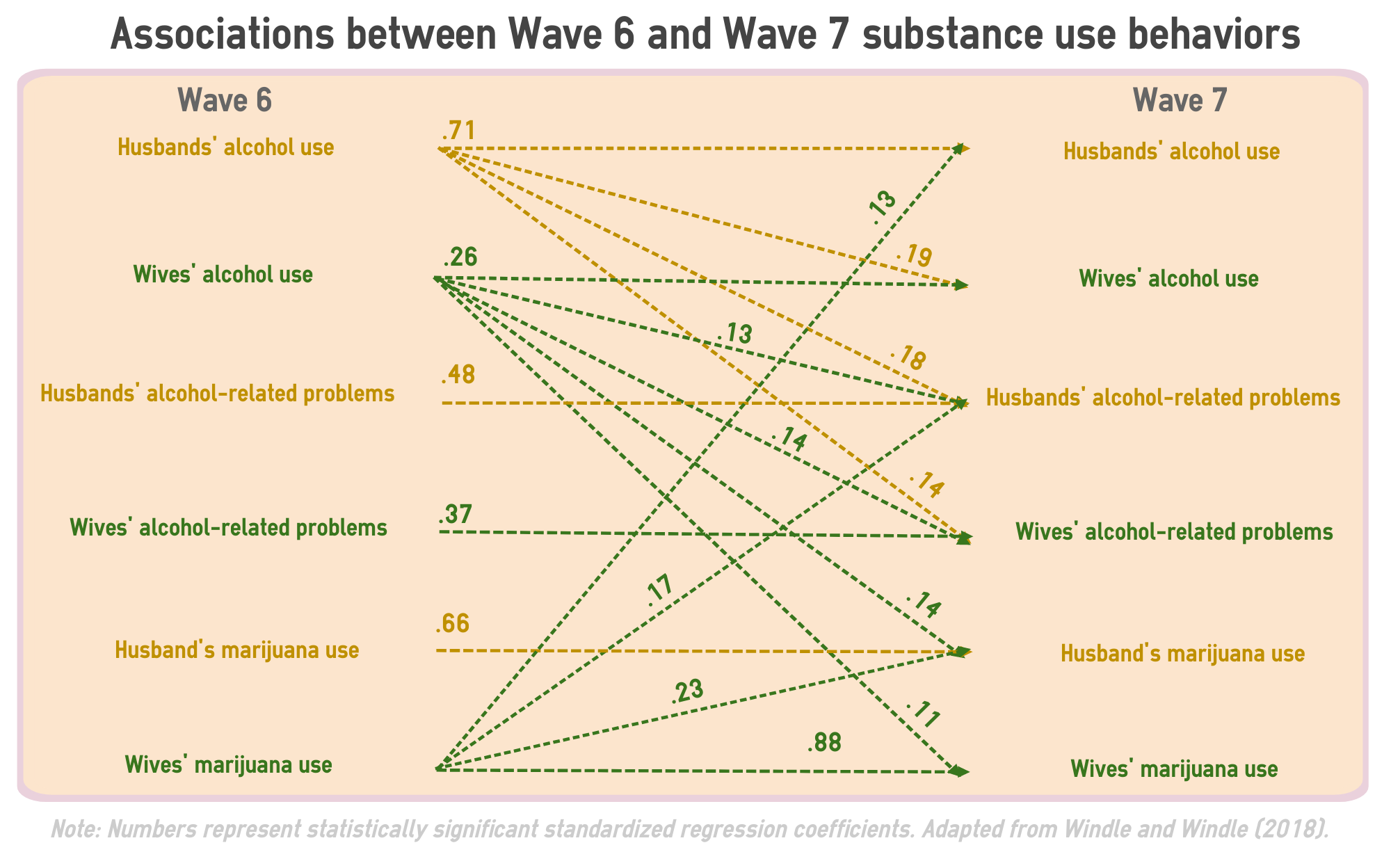The DRAM, Vol. 14(5) – The relationship between marriage and substance use behaviors
People who experience alcohol-related problems might turn to loved ones for help improving these problems or abstaining from alcohol, yet the substance use behaviors (SUB) of spouses might be an obstacle to recovery. This week, The DRAM reviews a study by Michael Windle and Rebecca Windle that explores how spouses might influence each others’ alcohol and marijuana use.
What is the research question?
Which spousal SUBs are the most influential on the other spouse’s SUB? Does this relationship change depending on which substance a spouse uses?
What did the researchers do?
The researchers recruited 237 heterosexual married couples from two waves (i.e., Wave 6 and Wave 7) of a larger, 23-year-long study. These two waves were about five years apart. At Wave 6, couples were married for an average of 3 years.1 Participants responded to questions about past-month alcohol use behaviors,2 alcohol-related problems (e.g., “Fought with boyfriend or girlfriend over drinking”, “Missed school due to drinking”),3 and frequency of past-six-month marijuana use. The researchers used regression analyses to assess relationships between each spouse’s SUB.
What did they find?
A participant’s SUB at Wave 6 strongly predicted his or her own SUB at Wave 7. To a lesser extent, some aspects of spouse SUB at Wave 6 predicted SUB use at Wave 7 (see Figure). Specifically, wives’ extent of alcohol or marijuana use at Wave 6 predicted husbands’ extent of alcohol use, experience of alcohol-related problems, and marijuana use at Wave 7. Husbands’ alcohol use at Wave 6 predicted wives’ extent of alcohol use and alcohol-related problems at Wave 7.
Figure. Click image to enlarge.
Why do these findings matter?
Supportive spouses might do more harm than good when both partners in a relationship use substances and one partner is trying to quit or reduce these use behaviors. Someone in this position might benefit from having an open dialogue with their partner about their goals and how each partner’s behavior might affect one another. Future research should explore whether having non-substance using social networks changes the strength of this relationship between spousal substance use behaviors.
Every study has limitations. What were the limitations in this study?
This study did not evaluate how SUBs influence spouses within same-sex marriages. Same-sex spouses might experience this influence differently. The researchers did not measure the amount of marijuana used by each spouse. The difference between a person who smokes a little every day and a large amount once a week might influence the strength of the relationship between each spouses SUB.
For more information:
The National Helpline offers free referral and information for substance use support services. Additional substance use and gambling-related support services can be found on The BASIS Addiction Resources page.
— Pat Williams
What do you think? Please use the comment link below to provide feedback on this article.
________________
1 At Wave 6, wives were about 29 years old and husbands were about 30 years old. Almost all participants identified as non-Hispanic White, reported full-time employment, and reported income of $40,000 or higher.
2 Past-month alcohol use behaviors was assessed by questions about type (i.e., wine, beer, or spirits), frequency (i.e., on a scale from 1 to 7 where 1 is never and 7 is every day), and amount (i.e., on a scale from 1 = none to 10 = more than 8 drinks).
3 Alcohol-related problems were assessed using the Alcohol Problems Index.
